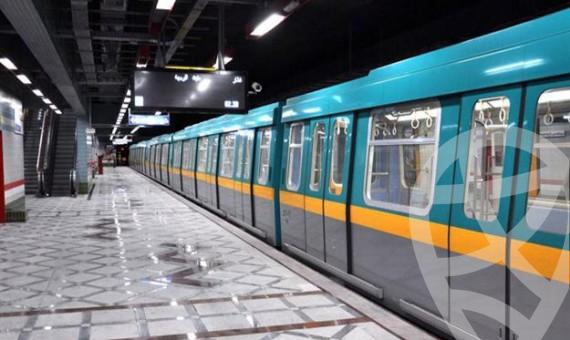
The quality of the transportation network anywhere provides a lot of investment and real estate opportunities. It also serves tourism. Therefore, the state is striving to develop the entire transportation system in Egypt through the opening of the Ministry of Transport for new projects and the development of the old system. One of the most important projects that have already been implemented is the fourth metro line.
Details about the Fourth Line of the Metro Project
Within the framework of the plan adopted by the state to develop the transportation network, the work on the fourth line subway project has begun. It is a huge project that will take about 5 years to implement and will cost about EGP 9 billion.
The project aims to alleviate the pressure, congestion, and traffic paralysis that frequently occur on the residents of Cairo and Giza. The fourth line of the metro will link the 6th of October City, west of Giza, and Al Rehab City, east of Cairo, and will pass through central Cairo, Old Cairo, Nasr City, and Heliopolis.
The fourth metro line will be approximately 40 kilometers long. It will include about 37 stations, and it will be divided into two stages:
The first phase will include: the boundaries of the 6th of October City, Al Haram, El Remaya Square, Al Malek Al-Saleh, Amr Ibn Al-Aas.
This line connects Cairo, Giza and 6th of October governorate, and the journey will be 19 kilometers long, and include 17 stations starting from the exchange station (Hadaek Al Ashgar) on the borders of Sixth of October City, and it will pass down the Nile to the El Malek El Saleh station to intersect with the first line of the metro (Al Marj, Helwan) at the same station, until it reaches Amr bin Al-Aas station, which is the last station of the first phase of the fourth line.
The second phase will include: Amr Ibn Al-Aas, Nasr City, New Cairo.
The length of this stage is 23 kilometers and includes 20 stations, starting from Amr bin Al-Aas station, which it shares with the first phase, passing through Salah Salem Street and the castle, then the Manshiyat Naser area, then Al-Duwayqa, Al-Arab region, the Arab Contractors Club and the Railroad Club, passing through Al-Azhar University, Al-Shahid Axis and Mustafa Al-Nahas Street, Al-Tayaran Street, Abbas Al-Akkad, Makram Ebeid and Hassan Al-Maamoun Street. It reaches the 10th district in Nasr City and then Zahraa Madinat Nasr to intersect with the ring road, and then to Al Warsha area east of the ring road and northern Egypt Suez desert.
The fourth line shares with the first line (Al-Marj, Helwan) in the exchange station Al-Malek Al-Saleh, and with the second line (Al-Munib, Shubra) at Giza station.
Stations of the Fourth Line
- Hadayaa Al-Ashgar
- The Pyramid gardens
- Al-Nasr
- The Grand Egyptian Museum
- Shooting square (Medan Al Remaya)
- Pyramids
- Mariouteya
- Arish
- Al Matbaaa (The printing press)
- Talbya
- Madkour
- El Mesaha
- Giza (exchange station with the second metro line)
- Giza Square
- Al Rawda
- Al Malik el Saleh (interchange station with the first metro line)
- Fustat
- Citadel of Saladin
- King Mansour
- Sixth district
- Al Tyran
- Abbas El Akkad
- Makram Ebeid
- Ahmed Al-Zomor
- El Mesaq
- Mubarak Academy
Features of the Fourth Line
The metro is one of the projects that make the transportation system better and easier for many citizens, and the opening of the fourth line of the metro will have many advantages, including:
- The fourth line of the metro will link the governorates of Cairo, Giza and Sixth of October City, and it will be a link between the crowded areas in these cities and the remote areas that do not reach much transportation
- The fourth line of the metro takes around 2.5 million passengers per day
- The fourth metro line will contribute to reducing congestion and traffic congestion, and will reduce the density of other metro lines and other transportation
- The new metro line passes through the Grand Egyptian Museum station, which will facilitate access for visitors there, and it will have a positive impact on this region in terms of tourism
- The new metro line saves a lot for people who struggle to go to work in distant areas such as 6th of October City, the Ring Road, the Pyramids Gardens and other places that the metro passes through
The Impact of the Fourth Line of the Metro on the Real Estate Market
Having a metro station anywhere increases the value and price of real estate in this place. The new line of the metro will link Cairo, Giza and 6th of October City. It will reach many places that are considered somewhat remote due to the lack of various means of transportation for them.
This will have a positive impact on all real estate in these areas, whether residential real estate or commercial and administrative units and shops, because the presence of a fast and safe means of transportation such as the metro encourages real estate investment anywhere.
The post The Impact of the Fourth Line of Metro On Real Estate and Tourism appeared first on Aqarmap Blog.
from Aqarmap Blog https://ift.tt/3wAIoiM
No comments:
Post a Comment